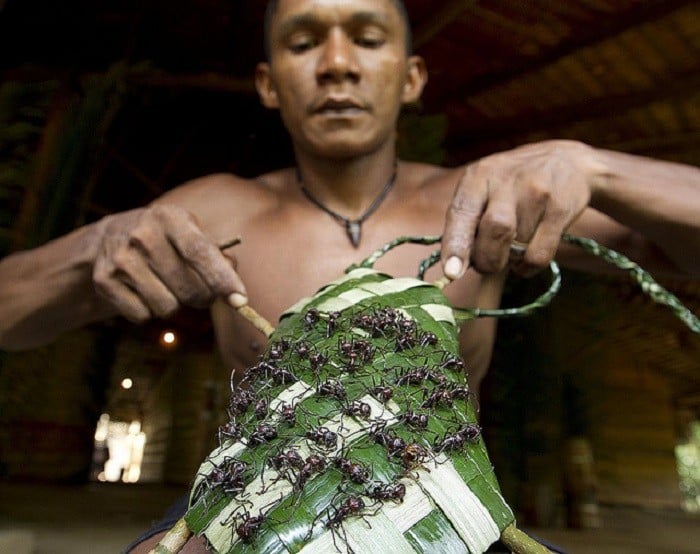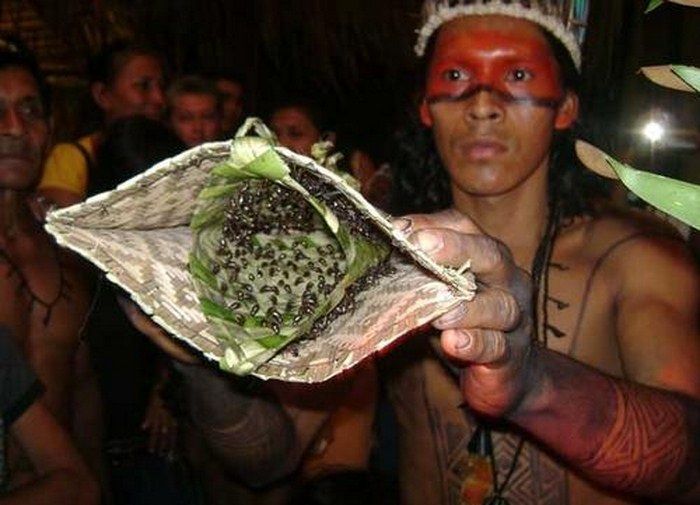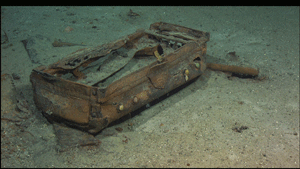From a Sweet Sixteen, to a Quinceanara, a Rumspringa, and a Bar-mitzvah, every culture has their own coming of age rituals that will bring their children into adulthood. Though not all of these rituals are easy going and consist of a party and having fun. Other coming of age rituals are meant to toughen children up to make sure they are worthy and prepare for them life that comes with being an adult. One of these rituals is the Bullet Ant tradition of the Sateré-Mawé, an indigenous tribe in the Brazilian Amazons. This tribe has little contact with the outside world and are mostly known because of their coming of age ritual.

In the Sateré-Mawé tribe when a boy turns thirteen it is decided that he will be initiated into manhood. So to begin the preparation for the ceremony, the boys collect bullet ants in the jungle and when caught the bullet ants are sedated by dropping them into a brew of the crushed leaves of a cashew tree. After the ants are sedated they are sowed into gloves. When the ants wake up, angry at being sowed into a glove (the ants are unharmed) the ceremony will begin. Each boy in the ceremony has to wear the gloves twenty times for ten minutes each while performing a dance. It is believed that this ritual will prepare boys for the suffering of manhood and make them better warriors.
To provide context about the bullet ants, they are officially known as the worlds most painful insect. That’s why they are called bullet ants, their sting is comparable to being shot by a bullet. The sting of a bullet ant can last for twenty four hours and It is said that their sting is thirty times worse than a bee sting. On the Schmidt Pain Index, which measures the sting of insects on people, it was given a four plus. On the index, stings can range from level one to a level four with four being the worst and most painful. Luckily, bullet ants are nonaggressive unless provoked but when you are stung by one it will release a chemical that signals other ants to sting multiple times.
This ritual of the Sateré-Mawé tribe was interesting to learn about. The first link that I posted was to a YouTube video by National Geographic documenting one of the ceremonies. In the video you can see the boys going through the ritual as well as an outsider who wanted to try the ritual out for himself. I noticed how the outsider reacted to wearing the gloves compared to how the boys from the tribe reacted to wearing the gloves. The world and its cultures are so intriguing and I love learning about different rituals around the world.
:max_bytes(150000):strip_icc()/bullet-ant-or-conga-ant--paraponera-clavata--521688497-5b82b4ec46e0fb00820e0ec8.jpg)











